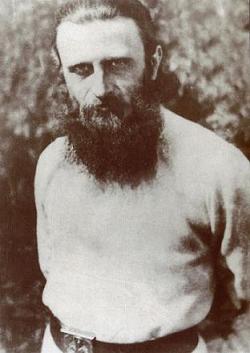Born in the county of Hunedoara, Romania, Fr. Arsenie Boca (September 29, 1910 – 1989) was one of the most important Romanian monastic figures of the 20th century. Ordained as a celibate Dean by Metropolitan Nicolae Bălan in 1935, he spends three months at the Romanian Prodromu Skete in Mount Athos, and is then established at the Sâmbăta de Sus Monastery (Braşov county), and receives tonsure in 1940. In 1942, he is ordained a Priest. By 1940, he had already sparkled in Sâmbăta de Sus what one of his contemporaries would describe as: “That uplifting time when the whole of Transylvania would make its way on singing pilgrimages defying chest-deep snow, to Sâmbăta de Sus, built by Martyr Voivode Constantin Brâncoveanu.”
Besides his outstanding contribution to the translation of the Philokaly alongside another reputed theological figure, Fr. Dumitru Stăniloae, he will always be remembered for his activity as a Priest, which earned him the surname of the “guider of souls”. Persecuted by the communist regime but highly respected and loved by the faithful, he was buried at the Prislop Monastery, which is now one of the country’s most important pilgrimage places.
“Fr. Arsenie was a unique phenomenon in the history of Romanian monasticism; a figure of high monastic stature, of a kind that the Romanian Orthodox Church never had before him.” Fr. Dumitru STĂNILOAE

 There was this monk who used to do a full prostration – even on Sundays – before any visitors who had just been at his monastery and taken the Holy Eucharist. To all those who were vexed by his behaviour, he would reply:
There was this monk who used to do a full prostration – even on Sundays – before any visitors who had just been at his monastery and taken the Holy Eucharist. To all those who were vexed by his behaviour, he would reply:
